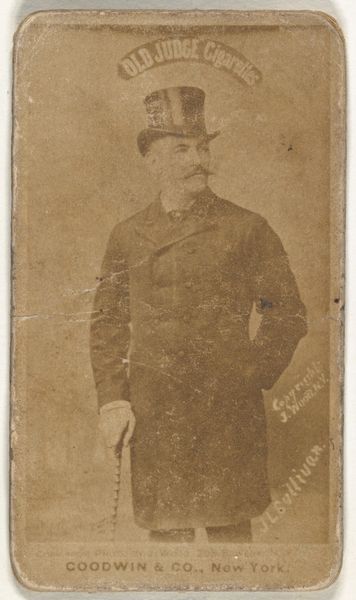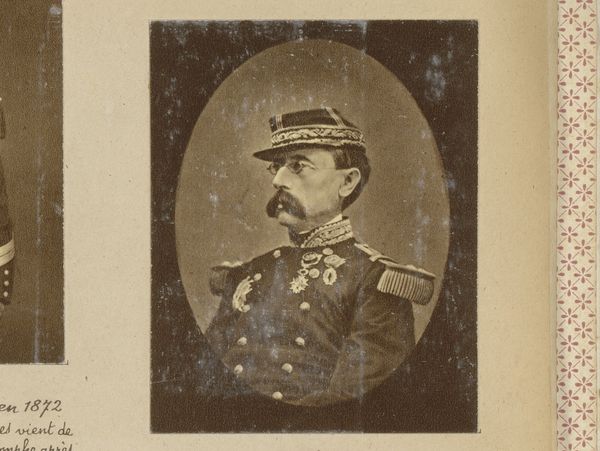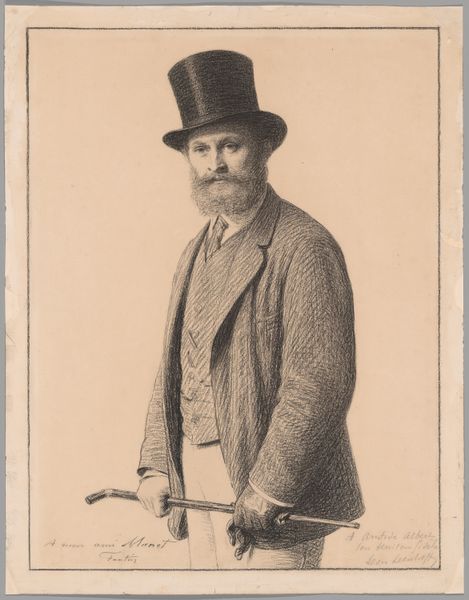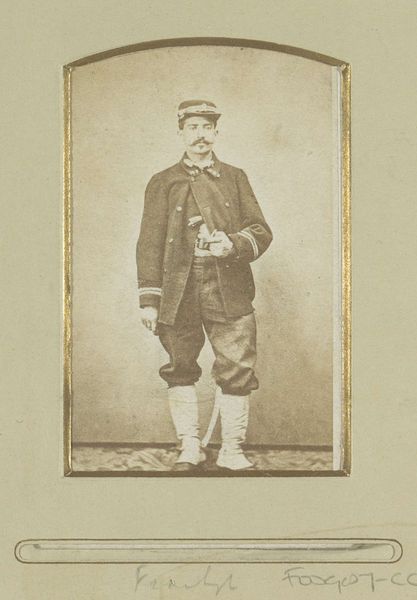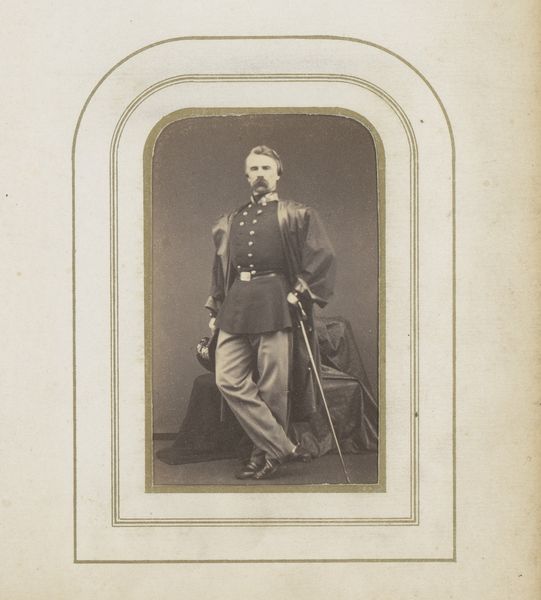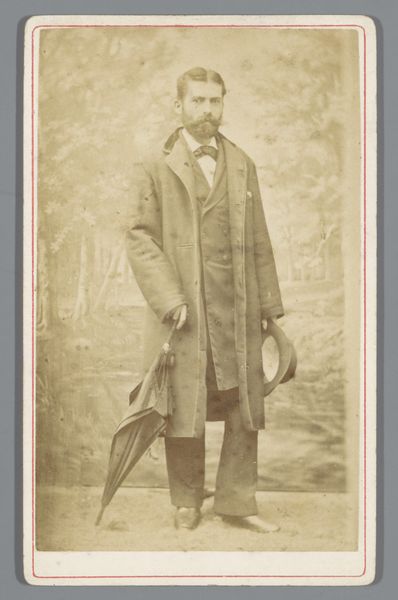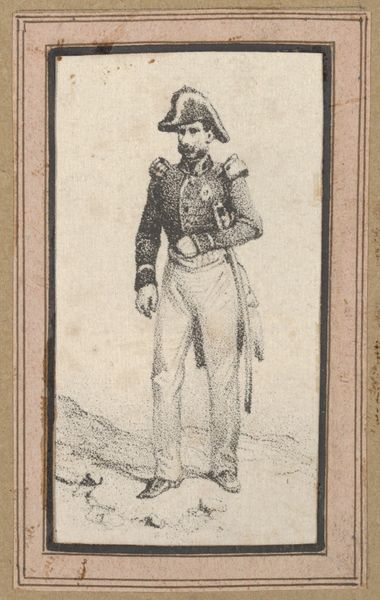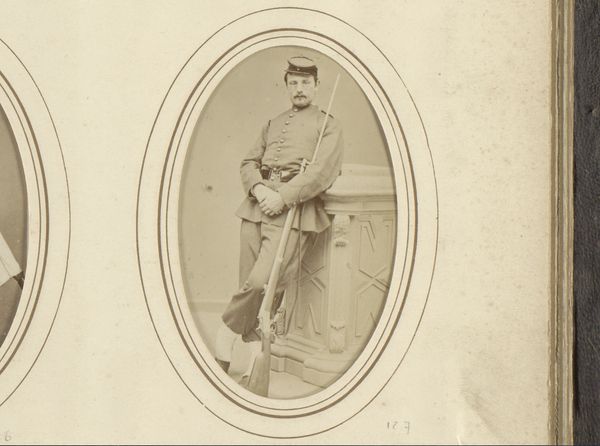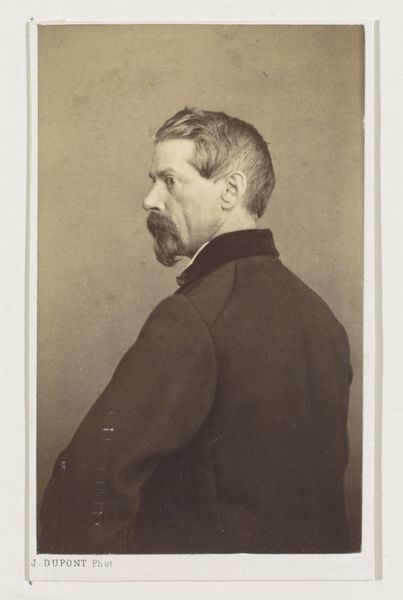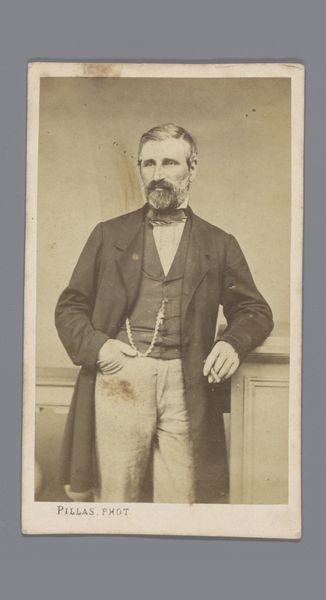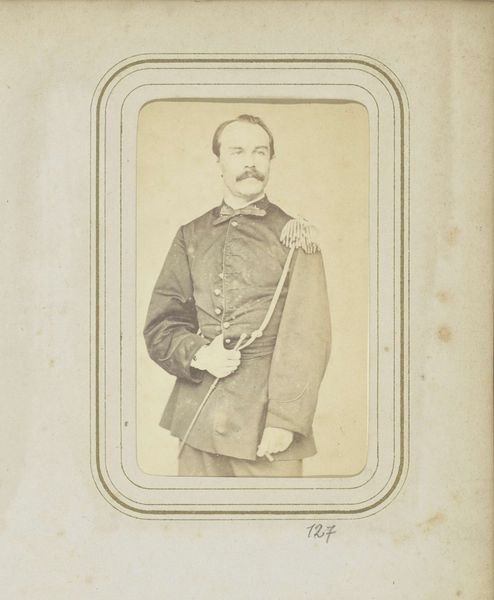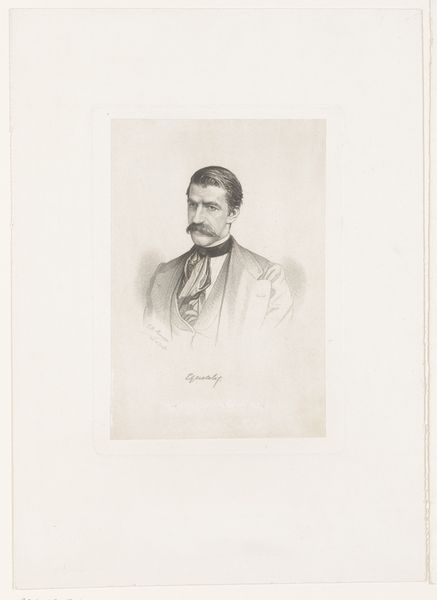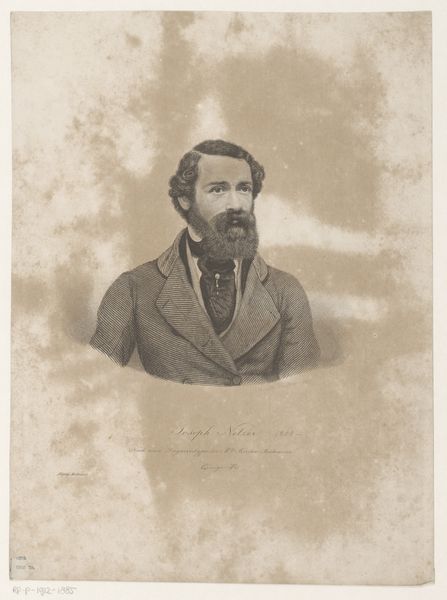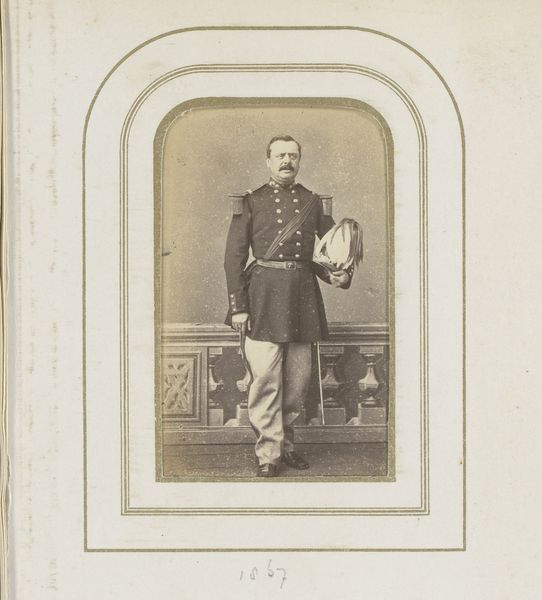
print, wood-engraving
#
portrait
# print
#
old engraving style
#
portrait reference
#
united-states
#
history-painting
#
wood-engraving
Dimensions: 9 x 5 7/8 in. (22.9 x 14.9 cm)
Copyright: Public Domain
Curator: Winslow Homer's 1861 wood engraving, "Colonel Wilson of Wilson's Brigade," held in the Minneapolis Institute of Art, offers a potent glimpse into the visual culture of the Civil War era. Editor: The immediate impression is somber. It’s a study in grays—the cross-hatching creates depth, but the tonal range feels limited, befitting the grave nature of its subject. Curator: Indeed. Wilson and his brigade emerged as vital actors in the early stages of the conflict. This image encapsulates ideas surrounding the figure of the Union soldier as an American ideal, a point of intersection where duty, masculinity, and patriotism converged. How does that sit, aesthetically, for you? Editor: I’m struck by the textures achieved. The coarse grain of the wood block lends itself surprisingly well to rendering fabrics: the subtle weave of his coat, the smooth formality of his cravat. And that contrasts strikingly with the resolute, hardened lines of his face. There's a visual tension between fragility and determination that holds interest. Curator: I agree. Beyond formal elements, though, we should read this within a matrix of the social forces in play during that era. Wilson embodies the shifting racial and class dynamics central to the Union cause, and a nascent conception of American nationalism, however exclusionary. How might we situate his character in that context? Editor: You're right, this isn't just a portrait, it's propaganda of a kind, yet cleverly understated. There's little grandiosity—it’s an appeal to earnestness, and an attempt to forge an American iconography out of something fresh, using simple forms for maximum clarity. Curator: Precisely, clarity of image linked inextricably to an attempt at clarifying the national purpose. We are invited, I think, to consider how such early wartime images contributed to evolving social narratives, ones which continue to resonate—however dissonantly—today. Editor: Yes. Thinking through Homer's subtle choices gives us insight into not just the aesthetic aims of this era, but the socio-political context that drove it. Thank you, that was elucidating.
Comments
No comments
Be the first to comment and join the conversation on the ultimate creative platform.
